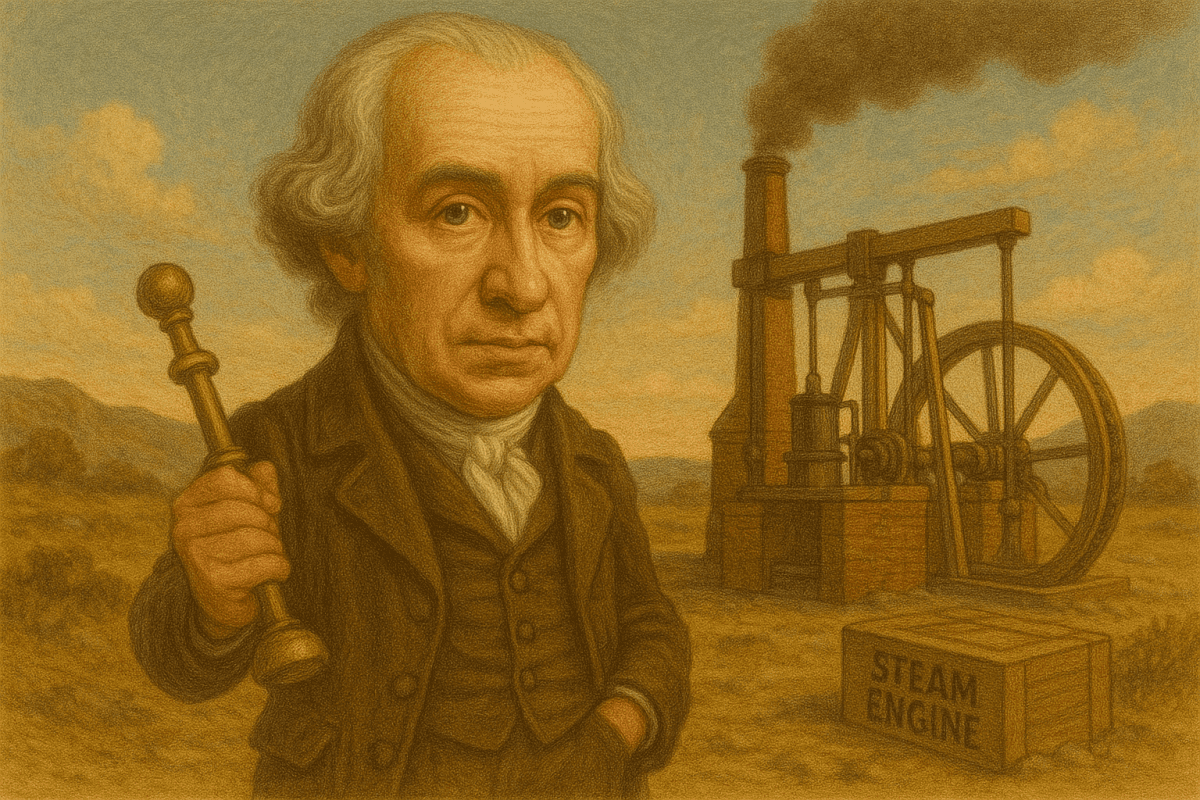James Watt: The Man Who Steamed Ahead of His Time
Ever wondered who's responsible for that industrial revolution you learned about in history class? You know, the one that completely transformed how we make stuff and get around? Well, meet James Watt – the Scottish engineer whose improved steam engine literally powered us into the modern age. But here's the thing – Watt wasn't just some lone genius tinkering in his workshop. His partnership with businessman Matthew Boulton turned out to be one of history's most successful tech collaborations.
The Early Days of a Mechanical Mind
James Watt wasn't born with a silver steam engine in his mouth. Coming into the world in 1736 in Greenock, Scotland, young James showed an early knack for all things mechanical. As a kid, he'd spend hours taking apart his toys to see how they worked – much to his parents' frustration, I'm sure!
After training as a mathematical instrument maker (basically the 18th-century version of a precision engineer), Watt landed a position at the University of Glasgow. It was here that fate stepped in, disguised as a broken Newcomen steam engine model that needed fixing.
Now, the Newcomen engine was the standard steam technology of the day, but it was about as efficient as using a Ferrari to deliver newspapers. It wasted huge amounts of energy because the cylinder had to be repeatedly heated and cooled. While working on this model, Watt had his famous "aha!" moment during a Sunday walk in 1765.
"What if," he thought, "I added a separate condenser?" This seemingly simple idea meant the cylinder could stay hot while the steam condensed elsewhere, dramatically improving efficiency. Just like that, Watt transformed the steam engine from an energy-guzzling monster into something far more practical and efficient.
Great Idea, No Money – Enter Matthew Boulton
Having a brilliant invention is one thing. Having the cash to develop and market it? That's a whole different ball game. Watt was long on ingenuity but short on funds. He struggled for nearly a decade to turn his improved design into a commercial reality. Talk about frustration!
In 1774, Watt's luck changed when he met Matthew Boulton, a successful Birmingham businessman who recognized the potential of Watt's improved engine. Boulton had something Watt desperately needed – money and manufacturing know-how. Their partnership was official by 1775, and Boulton & Watt was born.
Boulton wasn't just a money man. He was a marketing genius with connections throughout Britain's emerging industrial landscape. While Watt continued refining his designs, Boulton promoted the engines to mine owners, factory operators, and anyone who'd listen. He was basically the Steve Jobs to Watt's Steve Wozniak – the business-savvy front man who knew how to sell the technical genius's creation.
Revolutionizing an Industry – One Piston at a Time
The Boulton & Watt steam engine wasn't just marginally better than what came before – it was a game-changer. Their engines used about 75% less coal than Newcomen's design. For businesses running steam engines non-stop, this wasn't just an environmental win (though nobody cared about that back then); it was a massive cost saving.
Their business model was pretty clever too. Instead of just selling engines outright, they charged customers based on the fuel savings their engines provided compared to the old Newcomen models. This meant:
- Their engines were more affordable upfront
- They made money as long as their customers' engines ran efficiently
- They had a built-in incentive to keep improving efficiency
Mining was the first industry to embrace Watt's innovation. Previously, mines frequently flooded, and the inefficient Newcomen engines could barely keep up with pumping out water. With Watt's improved design, deeper mining became possible, boosting coal and mineral production across Britain.
But the real revolution came when Watt figured out how to convert the up-and-down motion of the pistons into rotary motion. This seemingly simple innovation meant that steam power could now drive all sorts of machinery – from textile mills to factories to boats and eventually trains.
The Legacy: More Than Just Steam
By the time their patent expired in 1800, Boulton & Watt had installed hundreds of engines across Britain and Europe, fundamentally changing manufacturing forever. The partnership made both men wealthy and famous in their lifetimes – not something many inventors could claim back then (or even now, TBH).
Watt retired in 1800, living out his days as a respected inventor and fellow of the Royal Society. He died in 1819, leaving behind a transformed industrial landscape that would be unrecognizable without his contributions.
The unit of power we use today – the watt – is named after him. So every time you check how many watts your microwave uses or how powerful a light bulb is, you're paying a tiny tribute to James Watt. Not a bad legacy, right?
Why the Watt-Boulton Partnership Mattered
The story of Watt and Boulton reminds us that great innovation often happens at the intersection of technical brilliance and business acumen. Watt had the engineering genius, but without Boulton's business sense and capital, his improved steam engine might have remained just a clever idea.
Their partnership created a template for how technical innovation could be successfully commercialized – a model that countless tech companies still follow today. Think about it – how many brilliant engineers have partnered with business-minded entrepreneurs to change the world? From Jobs and Wozniak to Page and Brin, the Watt-Boulton dynamic keeps repeating through history.
Final Thoughts
James Watt didn't invent the steam engine – but he made it practical, efficient, and commercially viable. Together with Matthew Boulton, he turned a promising technology into the driving force behind the Industrial Revolution.
Next time you're enjoying the fruits of our industrialized society (which is, let's face it, pretty much all the time), spare a thought for the Scottish engineer who helped make it possible. Not bad for a guy who started out just fixing a broken model at a university, right? :)
And hey, if Watt could revolutionize the world with 18th-century tools and knowledge, imagine what you might accomplish with all the technology at your fingertips today!



